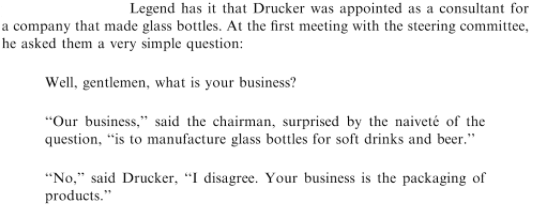Getting it wrong
Taxi Magic, Cabulous, and even UK’s Hailo which launched later, viewed their core customers as taxi drivers who used the app to reduce their waiting time, connecting them to riders basis availability and proximity. The app certainly benefited riders who could now order a car via an app instead of waiting to hail one, or calling for one. But the primary customers were taxi drivers, and their product was about drumming extra business for taxi drivers, reducing their waiting. This meant several negatives for riders.
For one, when business was heavy, cabbies wouldn’t bother to turn on the app, leading to riders seeing no cabs available on the app. Secondly, this also meant that when a rider hailed a cab, the dispatch algorithm sent not the closest car, but the one waiting the longest for a ride. And lastly, this driver-centricity meant that these services had to adapt themselves down to the poor software and payment systems that taxi cabs ran on. In fact Cabulous did not even have a payment service built in.
Getting it right
Uber, on the other hand, defined itself around satisfying the consumer’s desire for a safe, swift ride. In a statement by Travis Kalanick, made on stage at a LeWeb conference in London, he contrasted Uber with Hailo, by saying “we haven’t built our product around a market, we’ve built an experience around a customer desire”. To make this happen, Uber had to build a new network of drivers distinct from the existing taxi drivers that Hailo and Taxi Share were serving. This meant fights with regulators, existing taxi cab associations and mayors but they were willing to do that if it meant more drivers to the network.
In The Upstarts, Jay Bregman, one of the founders of Hailo, talking about their mis-steps says “The problem is that you really have to pick sides”. And that is exactly what Uber did. Once it defined its core customer, and the product which would meet that customer need most effectively, the resultant strategy became clear.
The process of how they arrived at the product definition is depicted in the book, by capturing a fascinating discussion between Kalanick and his A-team in 2012, on introducing lower priced options, including traditional taxis on Uber’s network. At that point, Uber’s imagery was about luxury, as the cars on the network were town cars or limousines. Their tag line to consumers at that time was ‘everyone’s private driver’. Some of the team members were worried that introducing lower-priced options on the Uber app would erode the Uber brand.
Kalanick closed the debate by saying “The luxury of Uber is about time and convenience. It is not about the car”. This is a tremendous insight, and one which led to the eventual product definition: offering the most efficient, luxurious ride at multiple price points to satisfy the consumer’s desire for a ride. The resultant product definition helped Uber achieve strategic clarity. It was now clear what strategy it had to pursue to meet consumer demand.
The quarter-inch hole
Marketing theorists have long propounded the importance of understanding your product and what business you are in. They have encouraged viewing the business from the viewpoint of the customer, and encouraging the company to think of itself as a customer-creating and satisfying machine. The present dominant framework in this regard is the Jobs-to-be-done theory, popularized by Clayton Christensen.
In this theory, Christensen encourages us to think of the products we sell as merely tools that the customer hires to get a job done. The job is his need, and the product we sell is a tool. The need will remain but the tool may change. It is relevant to remember how Travis Kalanick described Uber as an experience around a customer desire. I am not sure if Travis reads much marketing literature, but his marketing thinking is clear and cogent.
I will end this post with a quote and a slightly longer story.
First, the quote. Ted Levitt, one of the legendary marketing gurus, remarked in his landmark essay Marketing Myopia “People don’t want to buy a quarter-inch drill, they want a quarter-inch hole”, describing that customers don’t exist to buy your products but to solve their needs or meet their desires.
Now the slightly longer story. Peter Drucker, another legendary management guru, helped a company understand what business they were in thus clarifying the to them what product they were selling. The story from the book ‘Managing People and Organizations: Peter Drucker’s Legacy by Guido Stein is below.

